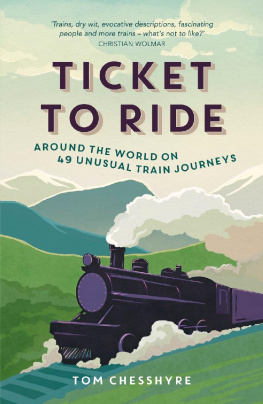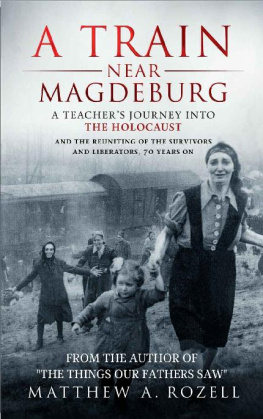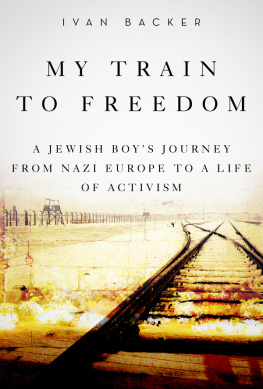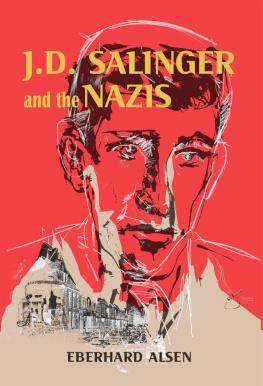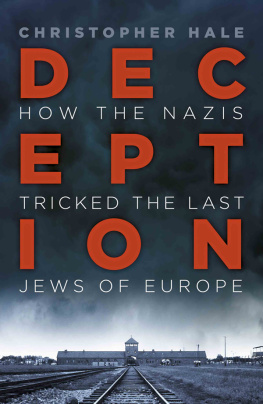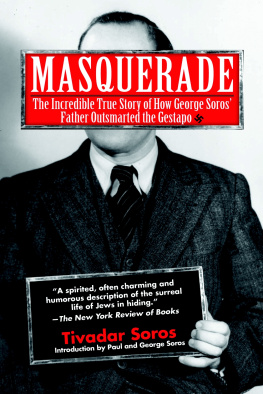KASZTNER's TRAIN
KASZTNER's TRAIN
The True Story of Rezs Kasztner, Unknown Hero of the Holocaust
ANNA PORTER

Copyright 2007 by Anna Porter
07 08 09 10 11 5 4 3 2 1
All rights reserved. No part of this book may be reproduced,
stored in a retrieval system or transmitted, in any form or by any means,
without the prior written consent of the publisher or a license from
The Canadian Copyright Licensing Agency (Access Copyright). For a copyright
license, visit www.accesscopyright.ca or call toll free to 1-800-893-5777.
Douglas & McIntyre Ltd.
2323 Quebec Street, Suite 201
Vancouver, British Columbia
Canada V5T 4S7
www.douglas-mcintyre.com
Library and Archives Canada Cataloguing in Publication
Porter, Anna
Kasztner's train: the true story of Rezs Kasztner, unknown
hero of the holocaust / Anna Porter.
Includes bibliographical references and index.
ISBN 978-1-55365-222-9
1. Kasztner, Rezs Rudolf, 19061957.
2. World War, 19391945JewsRescueHungary.
3. Holocaust, Jewish (19391945)Hungary. 4. JournalistsHungaryBiography.
5. LawyersHungaryBiography. I. Title.
D804.6.P67 2007 940.531835092 C2007-904392-5
Editing by Rosemary Shipton
Copy editing by Wendy Fitzgibbons
Jacket design by Peter Cocking
Text design by Jessica Sullivan
Map by C. Stuart Daniel/Starshell Maps
Every reasonable effort has been made to locate and acknowledge
the owners of copyrighted material reproduced in this volume.
The publishers welcome any information regarding errors or omissions.
Printed and bound in Canada by Friesens
Printed on acid-free paper that is forest friendly (100% post-consumer
recycled paper) and has been processed chlorine free.
We gratefully acknowledge the financial support of the
Canada Council for the Arts, the British Columbia Arts Council,
the Province of British Columbia through the Book Publishing Tax Credit,
and the Government of Canada through the Book Publishing Industry
Development Program (BPIDP) for our publishing activities.
This book is dedicated to the survivors
and the victims of the Holocaust in Hungary
Table of Contents
[ PART ONE ]
THE JEWISH QUESTION |
[ PART TWO ]
THE KINGDOM OF THE NIGHT |
[ PART THREE ]
THE HIGHWAY OF DEATH |
[ PART FOUR ]
DEATH WITH HONOR |
KASZTNER's TRAIN

Preface
In the summer of 1944 in wartime Budapest,
two men, a Nazi and a Jew, sat negotiating through a fog of cigarette smoke.
One was notorious: Adolf Eichmann, architect of the Holocaust.
The other was less well known: A Hungarian lawyer
and journalist called Rudolf [Rezs] Kasztner The topic of their
discussion was a train to be filled with Jews.
ADAM LEBOR, EICHMANN's LIST: A PACT WITH THE DEVIL,
THE INDEPENDENT, AUGUST 23, 2000

THE TRAIN WOULD CARRY 1,684 passengers out of German-occupied wartime Hungary. They were a motley group: industrialists, intellectuals, and Orthodox rabbis, Zionists and anti-Zionists, Polish and Slovak refugees from pogroms and concentration camps, the oldest eighty-five, the youngest a month old. The wealthy Jews of Budapest paid an average of us$1,500 for each family member to be included; the poor paid nothing. The selection process was arduous. Its memory is deeply distressing to those whose relatives did not survive the Holocaust.
It was a deal that would haunt Rezs Kasztner to the end of his life.
There were others he saved, too. In addition to those on the train, Kasztner negotiated with Adolf Eichmann to keep twenty thousand Hungarian Jews aliveEichmann called them Kasztner's Jews or the Jews on icefor a deposit of approximately $100 a head. And in the final weeks of the war, Kasztner traveled to several concentration camps with SS Lieutenant-Colonel Kurt Andreas Becher to try to prevent the murder of the surviving prisoners.
As he fought fearlessly for Jewish lives during the Holocaust, Kasztner met many of the now recognized heroes of wartime Europe, including Oskar Schindler, Raoul Wallenberg, and Carl Lutz. But his most fateful meetings were with Becher, Eichmann, and members of the SS Sonderkommando, whose chief purpose was to rob and murder all the Jews of Europe. These connections with high-ranking Nazis were to cost him his own lifeand, for decades, his reputation too.
Introduction
I FIRST HEARD OF Rezs Kasztner in 1999 from Peter Munk, a Canadian businessman-entrepreneur. Munk's energy and charm are legendary, as are his successful business ventures. And he owes his life to Rezs Kasztner.
We sat in a dark room with leather furniture, Persian rugs, heavy silk drapes, paintings that looked old, and bronze statuettes that looked recent. There were some faded black-and-white prints on a low-slung coffee table. I noticed pictures of a five-story, white-painted brick house, a shaded garden with puffball flowers, and a small, slanting lawn. Then a picture of his grandfather, Gabriel Munk, in the garden, hand resting on a brass-handled walking cane, dressed in a three-piece suit, with a gold watch-chain and a white kerchief neatly triangled out of his top jacket pocket. Next, Peter's father, also with felt hat and walking cane, and Peter's stepmothera great beauty, as Peter said. Her face half in shadow, her chin raised, her short, flared dress a fashion statement of the early forties, she seems to be flirting with the photographer.
Ive been sorting some boxes, Peter said, almost apologetically. I dont think about the past much, but we have to pack some of these old things He picked up another photograph, showing the most elegant man I have ever known. In this picture Grandfather Gabriel is framed by an ornate doorway. He stands next to a slight woman whose hand rests on his forearm.
Gabriel Munk had purchased seats on the last train from Budapest transporting Jews not destined for the death camps. The train left Budapest on July 1, 1944, three and a half months after the German occupation of Hungary, two and a half months after the first deportations of Hungary's Jews to Auschwitz-Birkenau.
Munk showed me a photograph of gray and white people standing around a railway carriage. They seem aimless, as people often do when they are waiting. Some are lining up at metal steps, and one woman in a light, two-piece suit with padded shoulders and high-heeled shoes is looking back at the camera. A man in a long, belted raincoat is helping her up with one hand while holding her small valise in the other. In the background stands a German soldier, his rifle at ease. The woman is smiling.
It seems a very ordinary picture, except that this photograph was taken in the summer of 1944, at a time when Hungarian Jews were brutalized, robbed, beaten, and shot, and when many witnessed the slaughter of their children. It was the summer when 437,402 of them were packed into cattle cars destined for Auschwitz-Birkenau, where most of them were murdered. At the time the photo was taken, Peter Munk's family was boarding a train toward the west.
Next page



